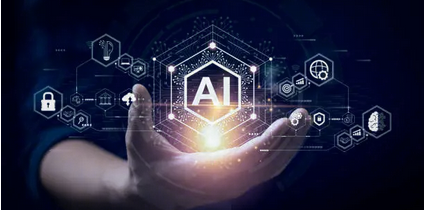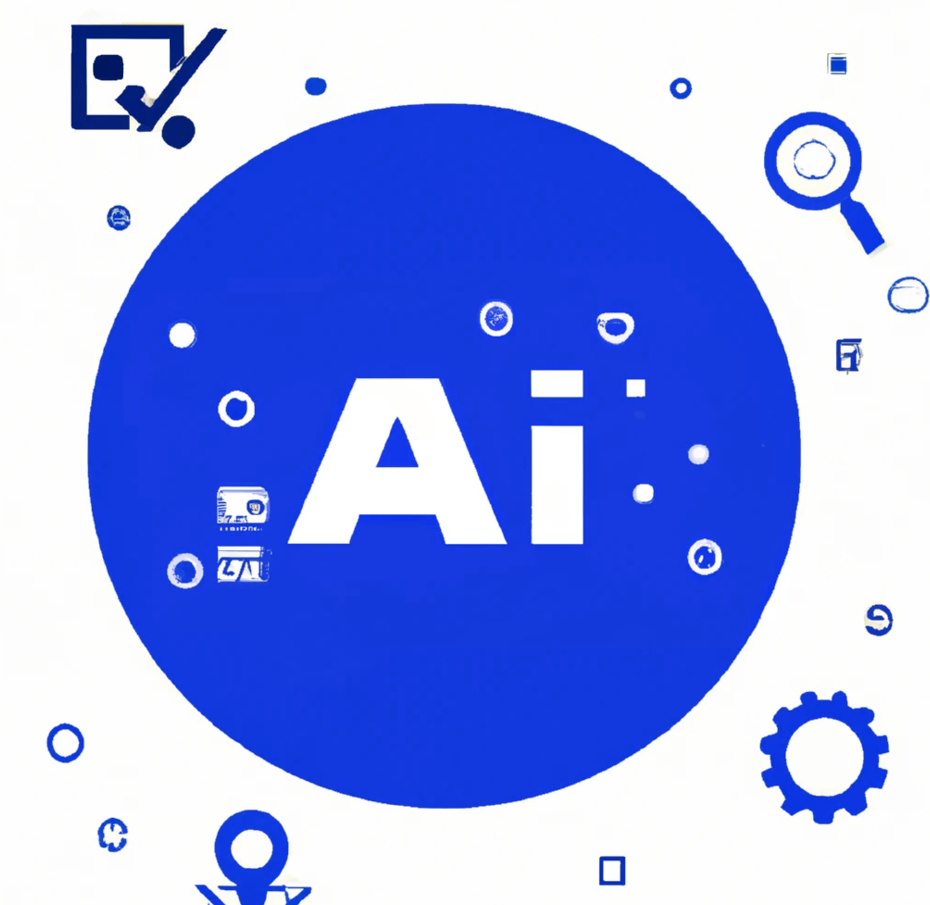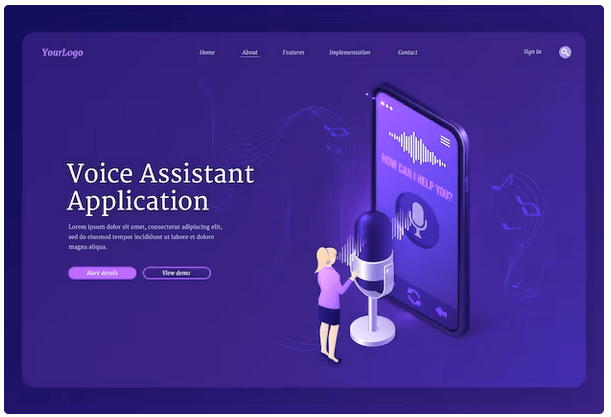
Dangers of Artificial Intelligence for Human Kind

-
- Artificial Intelligence Dangers for Human Kind
Artificial Intelligence (AI) has become an integral part of our modern world, revolutionizing industries and improving our lives in countless ways. However, as AI continues to advance at an unprecedented pace, concerns about its potential dangers for humanity have also grown. In this comprehensive guide, we will explore the evolving landscape of AI and the risks it presents to humanity.
Understanding the Dangers of Artificial Intelligence for Human Kind
AI’s influence is widespread and spans various sectors:
1. Autonomous Systems
Artificial Intelligence-driven autonomous systems, including self-driving cars and drones, have the potential to make decisions without human intervention. While this offers benefits, it also raises concerns about safety and accountability.
2. Deep Learning and Decision-Making
Artificial Intelligence algorithms, particularly deep learning models, are increasingly used in critical decision-making processes, such as healthcare diagnosis and financial predictions. Errors in these systems can have profound consequences.
3. Automation of Jobs
The automation of jobs through AI and robotics is reshaping the job market. This can lead to unemployment and social disparities, affecting the well-being of individuals and society.
4. AI in Cybersecurity
AI is used both offensively and defensively in the realm of cybersecurity. While AI can enhance security measures, it can also be exploited by cybercriminals to launch sophisticated attacks.
Risks and Concerns
As AI becomes more integrated into our lives, several significant dangers and concerns have emerged:
1. Ethical Concerns
AI can inadvertently inherit human biases present in the data it’s trained on, leading to biased decisions in areas like hiring, lending, and criminal justice.
2. Privacy Invasion
AI’s ability to process vast amounts of data can pose a threat to individual privacy. Personal information can be exploited without consent or used to manipulate behavior.
3. Security Vulnerabilities
As AI systems become more complex, they can become targets for cyberattacks. Hackers may exploit vulnerabilities in AI systems to cause harm or gain unauthorized access to critical infrastructure.
4. Lack of Accountability
When Artificial Intelligence systems make decisions, it can be challenging to assign responsibility in the event of errors or harm. This lack of accountability is a growing concern in various industries.
5. Job Displacement
The automation of jobs by Artificial Intelligence can lead to job displacement and increased economic inequality. Preparing the workforce for AI-related changes is a pressing challenge.
6. Existential Risks
Some experts worry about the long-term risks associated with superintelligent AI. These risks include Artificial Intelligence systems that surpass human intelligence and could act against human interests.
Real-World Examples
Real-world examples illustrate the dangers of AI:
1. Biased Algorithms
AI-powered systems have been found to exhibit bias, such as racial and gender bias, in decision-making processes, leading to discriminatory outcomes in areas like criminal justice and lending.
2. Privacy Violations
Social media platforms and companies often use Artificial Intelligence to collect and analyze user data, leading to concerns about the violation of user privacy and the potential for data misuse.
3. Cybersecurity Threats
AI-driven cyberattacks are on the rise. For example, Artificial Intelligence-generated deepfakes can impersonate individuals, leading to misinformation and reputational damage.
Mitigating the Risks
While the dangers of AI are real, they can be mitigated:
1. Ethical AI Development
Developers must prioritize ethical AI development by addressing bias, ensuring transparency, and adhering to ethical guidelines.
2. Data Privacy Regulations
Governments and organizations should implement robust data privacy regulations to protect individuals from data exploitation.
3. AI Security Measures
Cybersecurity measures should be strengthened to protect AI systems from hacking and exploitation.
4. Reskilling and Education
To address job displacement, reskilling programs and educational initiatives can prepare the workforce for an AI-driven world.
5. AI Safety Research
Research on AI safety is essential to anticipate and prevent potential catastrophic risks associated with superintelligent AI.
The Future of AI and Humanity
As AI technology advances, it is crucial to strike a balance between harnessing its potential for progress and mitigating the risks it poses. AI has the power to transform industries, healthcare, and education positively. Still, vigilance and proactive measures are necessary to ensure that it benefits humanity rather than endangering it.
conclusion
while the dangers of Artificial Intelligence for humanity are real and multifaceted, they are not insurmountable. With responsible development, ethical considerations, and regulatory measures, we can navigate the risks and unlock the full potential of AI for the betterment of society. By staying informed and taking a proactive approach to AI’s challenges, we can create a future where AI serves as a force for good.
Frequently Asked Questions
-
What are the primary dangers associated with artificial intelligence (AI)?
- The dangers of AI include bias and discrimination, job displacement, privacy invasion, security vulnerabilities, and potential existential risks from superintelligent AI.
-
How does bias in AI systems pose a danger to society?
- AI systems can perpetuate and amplify biases present in the data they are trained on, leading to discriminatory decisions in areas like hiring, lending, and criminal justice.
-
What are the privacy concerns related to AI?
- AI’s capacity to process vast amounts of data can result in privacy violations as personal information is collected and potentially misused without consent.
-
How does AI contribute to job displacement, and what risks does this pose?
- The automation of jobs by Artificial Intelligence and robotics can lead to unemployment and increased economic inequality, posing challenges for the workforce and society.
-
What are some examples of security vulnerabilities in Artificial Intelligence systems?
- As AI systems become more complex, they can become targets for cyberattacks. Vulnerabilities may be exploited by hackers to gain unauthorized access or cause harm.
-
What are existential risks associated with superintelligent AI?
- Existential risks involve concerns about AI systems surpassing human intelligence and potentially acting against human interests, posing long-term threats to humanity.
-
How can we address the dangers of AI for humanity?
- Mitigating AI dangers requires ethical AI development, robust data privacy regulations, enhanced cybersecurity measures, reskilling and education initiatives, and research on AI safety.
-
What are some real-world examples of the dangers of AI for humanity?
- Real-world examples include AI systems exhibiting bias in decision-making, privacy violations by tech companies, and the rise of AI-driven cyberattacks, such as deepfakes.
-
What role should governments, organizations, and individuals play in addressing AI dangers?
- Governments must enact regulations, organizations must prioritize ethical AI development, and individuals should stay informed and advocate for responsible AI use.
-
Can AI be a force for good despite its dangers?
- Yes, AI has the potential to bring about significant positive changes. By addressing the dangers responsibly, AI can benefit society in various ways, such as healthcare, education, and industry.

-
- Artificial Intelligence Dangers for Human Kind
Artificial Intelligence (AI) has become an integral part of our modern world, revolutionizing industries and improving our lives in countless ways. However, as AI continues to advance at an unprecedented pace, concerns about its potential dangers for humanity have also grown. In this comprehensive guide, we will explore the evolving landscape of AI and the risks it presents to humanity.
Understanding the Dangers of Artificial Intelligence for Human Kind
AI’s influence is widespread and spans various sectors:
1. Autonomous Systems
Artificial Intelligence-driven autonomous systems, including self-driving cars and drones, have the potential to make decisions without human intervention. While this offers benefits, it also raises concerns about safety and accountability.
2. Deep Learning and Decision-Making
Artificial Intelligence algorithms, particularly deep learning models, are increasingly used in critical decision-making processes, such as healthcare diagnosis and financial predictions. Errors in these systems can have profound consequences.
3. Automation of Jobs
The automation of jobs through AI and robotics is reshaping the job market. This can lead to unemployment and social disparities, affecting the well-being of individuals and society.
4. AI in Cybersecurity
AI is used both offensively and defensively in the realm of cybersecurity. While AI can enhance security measures, it can also be exploited by cybercriminals to launch sophisticated attacks.
Risks and Concerns
As AI becomes more integrated into our lives, several significant dangers and concerns have emerged:
1. Ethical Concerns
AI can inadvertently inherit human biases present in the data it’s trained on, leading to biased decisions in areas like hiring, lending, and criminal justice.
2. Privacy Invasion
AI’s ability to process vast amounts of data can pose a threat to individual privacy. Personal information can be exploited without consent or used to manipulate behavior.
3. Security Vulnerabilities
As AI systems become more complex, they can become targets for cyberattacks. Hackers may exploit vulnerabilities in AI systems to cause harm or gain unauthorized access to critical infrastructure.
4. Lack of Accountability
When Artificial Intelligence systems make decisions, it can be challenging to assign responsibility in the event of errors or harm. This lack of accountability is a growing concern in various industries.
5. Job Displacement
The automation of jobs by Artificial Intelligence can lead to job displacement and increased economic inequality. Preparing the workforce for AI-related changes is a pressing challenge.
6. Existential Risks
Some experts worry about the long-term risks associated with superintelligent AI. These risks include Artificial Intelligence systems that surpass human intelligence and could act against human interests.
Real-World Examples
Real-world examples illustrate the dangers of AI:
1. Biased Algorithms
AI-powered systems have been found to exhibit bias, such as racial and gender bias, in decision-making processes, leading to discriminatory outcomes in areas like criminal justice and lending.
2. Privacy Violations
Social media platforms and companies often use Artificial Intelligence to collect and analyze user data, leading to concerns about the violation of user privacy and the potential for data misuse.
3. Cybersecurity Threats
AI-driven cyberattacks are on the rise. For example, Artificial Intelligence-generated deepfakes can impersonate individuals, leading to misinformation and reputational damage.
Mitigating the Risks
While the dangers of AI are real, they can be mitigated:
1. Ethical AI Development
Developers must prioritize ethical AI development by addressing bias, ensuring transparency, and adhering to ethical guidelines.
2. Data Privacy Regulations
Governments and organizations should implement robust data privacy regulations to protect individuals from data exploitation.
3. AI Security Measures
Cybersecurity measures should be strengthened to protect AI systems from hacking and exploitation.
4. Reskilling and Education
To address job displacement, reskilling programs and educational initiatives can prepare the workforce for an AI-driven world.
5. AI Safety Research
Research on AI safety is essential to anticipate and prevent potential catastrophic risks associated with superintelligent AI.
The Future of AI and Humanity
As AI technology advances, it is crucial to strike a balance between harnessing its potential for progress and mitigating the risks it poses. AI has the power to transform industries, healthcare, and education positively. Still, vigilance and proactive measures are necessary to ensure that it benefits humanity rather than endangering it.
conclusion
while the dangers of Artificial Intelligence for humanity are real and multifaceted, they are not insurmountable. With responsible development, ethical considerations, and regulatory measures, we can navigate the risks and unlock the full potential of AI for the betterment of society. By staying informed and taking a proactive approach to AI’s challenges, we can create a future where AI serves as a force for good.
Frequently Asked Questions
-
What are the primary dangers associated with artificial intelligence (AI)?
- The dangers of AI include bias and discrimination, job displacement, privacy invasion, security vulnerabilities, and potential existential risks from superintelligent AI.
-
How does bias in AI systems pose a danger to society?
- AI systems can perpetuate and amplify biases present in the data they are trained on, leading to discriminatory decisions in areas like hiring, lending, and criminal justice.
-
What are the privacy concerns related to AI?
- AI’s capacity to process vast amounts of data can result in privacy violations as personal information is collected and potentially misused without consent.
-
How does AI contribute to job displacement, and what risks does this pose?
- The automation of jobs by Artificial Intelligence and robotics can lead to unemployment and increased economic inequality, posing challenges for the workforce and society.
-
What are some examples of security vulnerabilities in Artificial Intelligence systems?
- As AI systems become more complex, they can become targets for cyberattacks. Vulnerabilities may be exploited by hackers to gain unauthorized access or cause harm.
-
What are existential risks associated with superintelligent AI?
- Existential risks involve concerns about AI systems surpassing human intelligence and potentially acting against human interests, posing long-term threats to humanity.
-
How can we address the dangers of AI for humanity?
- Mitigating AI dangers requires ethical AI development, robust data privacy regulations, enhanced cybersecurity measures, reskilling and education initiatives, and research on AI safety.
-
What are some real-world examples of the dangers of AI for humanity?
- Real-world examples include AI systems exhibiting bias in decision-making, privacy violations by tech companies, and the rise of AI-driven cyberattacks, such as deepfakes.
-
What role should governments, organizations, and individuals play in addressing AI dangers?
- Governments must enact regulations, organizations must prioritize ethical AI development, and individuals should stay informed and advocate for responsible AI use.
-
Can AI be a force for good despite its dangers?
- Yes, AI has the potential to bring about significant positive changes. By addressing the dangers responsibly, AI can benefit society in various ways, such as healthcare, education, and industry.



